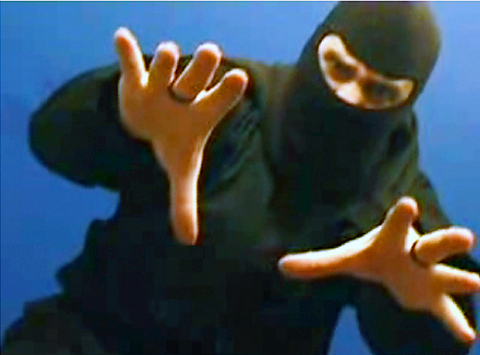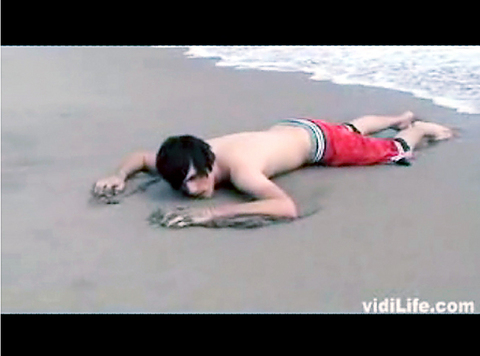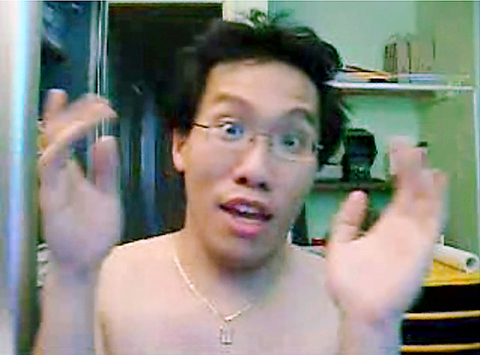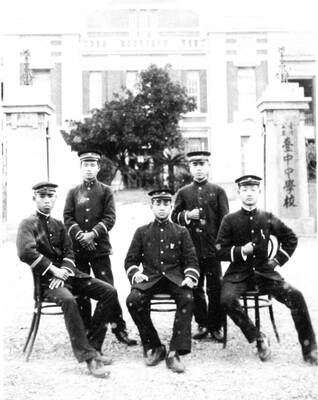Et tu, YouTube? The mellow Silicon Valley "video-sharing site," once styled as nothing more than a converted loft space for oddball videos, is looking more Hollywood by the minute. Back in the day, say, six months ago, YouTube was still meant to be pure NoCal: no judgments, no hierarchies, big bandwidth and lots of freedom. YouTube videographers weren't supposed to get stars on their doors from the powers that be.
But now we have the 2006 YouTube Video Awards, a product — so the intro on the awards page says — of "the YouTube community." But given that the rushed and almost certainly screwy voting commenced only once the nominees were published by YouTube, this community project doesn't seem quite organic. The dread idea of arts administration has come to YouTube. And in a real insult to the speedy Web world, this 2006 event has happened well into spring 2007, honoring bygone achievements. That seems very Internal Revenue Service, not to mention very Oscars.
So, oh, looky here in the winners' circle. We've got the neato guys who dance on treadmills, Smosh, the Wine Kone and Ask a Ninja. If these names sounds fresh to you, well, then, YouTube's done its job, and maybe you'll stop by, hang out and find something that actually answers to your tastes.

PHOTO: NY TIMES NEWS SERVICE
To older hands, the award winners, announced last week, will be recognizable as YouTube veterans, and their selection here makes blindingly clear the site's slacker aesthetic (Smosh, OK Go and the Wine Kone); its mush politics (the Free Hugs Campaign); and its chronic oscillation between absurdism (Ask a Ninja) and emo (Say It's Possible).
This value system is not intrinsically worse than the one that determines prime-time television's crisp, white-collar aesthetic; its mainstream politics; and its chronic oscillation between punchy and sappy. It's just that YouTube's not really supposed to have any aesthetic or ideological principles, is it? YouTube's video superlatives might make you think that Google might one day hand out prizes for best or shadiest Web site. Or that Wikipedia might honor the most brilliant idea. YouTube, Google and Wikipedia should be low-key clearinghouses of shared information. Not prosceniums.
YouTube's winners also reveal the site's mystified attitude toward animation, in the form of the sweet but dull Kiwi! cartoon, which takes the most adorable video prize. Recently, humble animation has now become so refined and poignant in various high-end graduate programs that even cartoons about little birds now carry the slightly pretentious air of French film. (Animators often discuss credentials and technique in the prefaces to their videos on YouTube; video makers, on the contrary, want everything to look tossed off.)

The widespread animus toward lonelygirl15, the hit online series that got its start on YouTube but then seemed to grow too big for its britches, also seems to be alive and well at the YouTube Awards, where it was nominated for several awards but won nothing.
Hostility toward the project comes through instead in choices like Ask a Ninja and The Wine Kone, videos by two ubiquitous male soloists who have lampooned the series. The YouTube boys' club is packed. The Wine Kone, a handsome guy with a steady gaze and a wheezy chortle, holds forth there on belly-button issues, while the Ninja plays older brother, offering advice and pushing Net neutrality, the so-called First Amendment of the Web.
Terra Naomi with her heartbreaking Say It's Possible won best music video here. That's a wonderful choice. The song has got a sustained ache to it, and the visual setup for the video — the singer at the guitar crowding the camera, before an unused keyboard — is painterly, in the tradition of the best YouTube bedroom guitar videos. (Unlike the funny OK Go guys on their treadmills; I like their pluck, but it's too MTV for YouTube.) With the look of a young Keith Richards, Terra Naomi is the only girl cool enough to make the cut in the YouTube awards.

The pity of these awards is ultimately that they might be some people's first contact with YouTube. That would be sad. My words of advice for people new to YouTube: Forget awards, and forget hip.
Instead, follow your pre-Internet interests to vintage film on YouTube, and that will lead you to video commentary, parodies and community. For starters, why not track down Ernest Hemingway with a man-size marlin, Shirley Verrett as Lady Macbeth, interviews with Sigmund Freud or color film from the Korean War?


In the March 9 edition of the Taipei Times a piece by Ninon Godefroy ran with the headine “The quiet, gentle rhythm of Taiwan.” It started with the line “Taiwan is a small, humble place. There is no Eiffel Tower, no pyramids — no singular attraction that draws the world’s attention.” I laughed out loud at that. This was out of no disrespect for the author or the piece, which made some interesting analogies and good points about how both Din Tai Fung’s and Taiwan Semiconductor Manufacturing Co’s (TSMC, 台積電) meticulous attention to detail and quality are not quite up to

April 28 to May 4 During the Japanese colonial era, a city’s “first” high school typically served Japanese students, while Taiwanese attended the “second” high school. Only in Taichung was this reversed. That’s because when Taichung First High School opened its doors on May 1, 1915 to serve Taiwanese students who were previously barred from secondary education, it was the only high school in town. Former principal Hideo Azukisawa threatened to quit when the government in 1922 attempted to transfer the “first” designation to a new local high school for Japanese students, leading to this unusual situation. Prior to the Taichung First

Chinese Nationalist Party (KMT) Chairman Eric Chu (朱立倫) hatched a bold plan to charge forward and seize the initiative when he held a protest in front of the Taipei City Prosecutors’ Office. Though risky, because illegal, its success would help tackle at least six problems facing both himself and the KMT. What he did not see coming was Taipei Mayor Chiang Wan-an (將萬安) tripping him up out of the gate. In spite of Chu being the most consequential and successful KMT chairman since the early 2010s — arguably saving the party from financial ruin and restoring its electoral viability —

The Ministry of Education last month proposed a nationwide ban on mobile devices in schools, aiming to curb concerns over student phone addiction. Under the revised regulation, which will take effect in August, teachers and schools will be required to collect mobile devices — including phones, laptops and wearables devices — for safekeeping during school hours, unless they are being used for educational purposes. For Chang Fong-ching (張鳳琴), the ban will have a positive impact. “It’s a good move,” says the professor in the department of